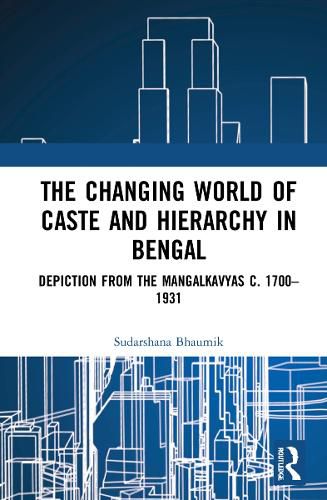Readings Newsletter
Become a Readings Member to make your shopping experience even easier.
Sign in or sign up for free!
You’re not far away from qualifying for FREE standard shipping within Australia
You’ve qualified for FREE standard shipping within Australia
The cart is loading…






This book challenges the prevalent assumptions of caste, hierarchy and social mobility in pre-colonial and colonial Bengal. It studies the writings of colonial ethnographers, Orientalist scholars, Christian missionaries and pre-colonial literary texts like the Mangalkavyas to show how the concept of caste emerged and argues that the jati order in Bengal was far from being a rigidly reified structure, but one which had room for spatial and social mobility. The volume highlights the processes through which popular myths and beliefs of the lower caste orders of Bengal were Sanskritized. It delineates the linkages between sedantized peasant culture and the emergence of new agricultural castes in colonial Bengal. Moreover, the author discusses a wide spectrum of issues like marginality and hierarchy, the spread of Brahmanical hegemony, the creation of deities and the process of Sanskritization, popular Saivism, the cult of Manasa in Bengal and the revolt of 1857 and the caste question.
Rich in archival sources, this book will be an essential read for scholars and researchers of colonial history, Indian history, political sociology, caste studies, exclusion studies, cultural studies, social history, cultural history and South Asian studies, especially those interested in undivided Bengal.
$9.00 standard shipping within Australia
FREE standard shipping within Australia for orders over $100.00
Express & International shipping calculated at checkout
This book challenges the prevalent assumptions of caste, hierarchy and social mobility in pre-colonial and colonial Bengal. It studies the writings of colonial ethnographers, Orientalist scholars, Christian missionaries and pre-colonial literary texts like the Mangalkavyas to show how the concept of caste emerged and argues that the jati order in Bengal was far from being a rigidly reified structure, but one which had room for spatial and social mobility. The volume highlights the processes through which popular myths and beliefs of the lower caste orders of Bengal were Sanskritized. It delineates the linkages between sedantized peasant culture and the emergence of new agricultural castes in colonial Bengal. Moreover, the author discusses a wide spectrum of issues like marginality and hierarchy, the spread of Brahmanical hegemony, the creation of deities and the process of Sanskritization, popular Saivism, the cult of Manasa in Bengal and the revolt of 1857 and the caste question.
Rich in archival sources, this book will be an essential read for scholars and researchers of colonial history, Indian history, political sociology, caste studies, exclusion studies, cultural studies, social history, cultural history and South Asian studies, especially those interested in undivided Bengal.